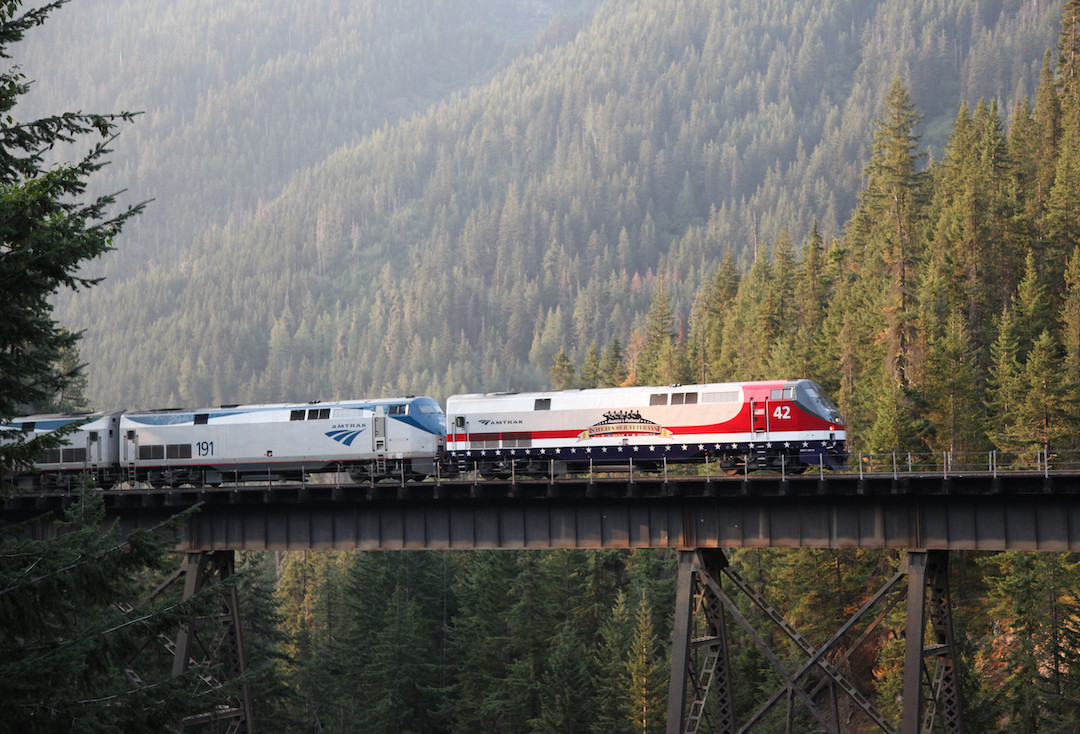Modern Rails: The Amtrak Era
Modern Rails: The Amtrak Era
In the heart of the United States, a remarkable transformation of passenger rail travel has been quietly taking place. Over the past few decades, Amtrak, the National Railroad Passenger Corporation, has been working tirelessly to redefine and revitalize the American rail system. This article explores the creation of Amtrak and the passenger rail revival it has spearheaded. We will delve into the challenges and successes the organization has faced, and finally, we will gaze into the crystal ball to envision the future of passenger rail in the United States.
The Creation of Amtrak and the Passenger Rail Revival
A Historical Snapshot
The story of Amtrak begins in 1971 when Congress passed the Rail Passenger Service Act, paving the way for the creation of Amtrak. The intent was to rescue ailing private passenger railroads and offer a more unified and efficient passenger rail service for the American people. On May 1, 1971, Amtrak commenced operations, taking over many of the country's iconic passenger rail routes, such as the renowned Super Chief and Broadway Limited.
This move marked a significant shift in the nation's transportation landscape. While rail travel had once been the backbone of American mobility, it had gradually faded into the background with the rise of highways and air travel. Amtrak's formation signaled a commitment to reviving this once-thriving industry.
The Revival Unleashed
Amtrak's early years were fraught with challenges, including underinvestment, decaying infrastructure, and stiff competition from other forms of transportation. However, the organization persevered, gradually rebuilding its fleet, expanding its routes, and improving service quality.
One of the key turning points was the introduction of the high-speed Acela Express service along the Northeast Corridor in 2000. This modern, electrified rail line provided a viable alternative to air travel, saving time and reducing congestion in the busy corridor connecting Boston, New York, and Washington, D.C. It demonstrated that passenger rail could not only compete but excel in the 21st century.
Challenges and Successes of Amtrak
The Uphill Battle
Amtrak has not been without its share of challenges. One of the most significant hurdles has been securing consistent funding and overcoming political hurdles. Unlike highways and airports, which receive consistent federal funding, Amtrak has often had to fight for its budget, leading to uncertainty and delays in infrastructure development and service improvement.
Shining Successes
Despite these challenges, Amtrak has achieved remarkable successes. The organization carries over 32 million passengers annually, serving more than 500 destinations across the United States. In recent years, Amtrak has invested in state-of-the-art trains and stations, enhancing passenger comfort and safety. The introduction of new services, like the Amtrak Guest Rewards program and Wi-Fi on select routes, has also improved the passenger experience.
The Future of Passenger Rail in the United States
A Promising Path Forward
As we look ahead, the future of passenger rail in the United States appears promising. Several factors are converging to support a renaissance in rail travel.
Firstly, growing concerns about climate change and environmental sustainability have led to increased interest in green transportation alternatives. Passenger rail is inherently more energy-efficient and produces fewer emissions than other forms of travel, making it an attractive choice for eco-conscious travelers.
Secondly, the continued expansion of high-speed rail networks, like the California High-Speed Rail project and plans for the Texas Central Railway, demonstrates a commitment to modernizing and expanding passenger rail services. These developments promise faster travel times, increased convenience, and economic benefits to the regions they connect.
Lastly, Amtrak's ambitious "Connect US" plan aims to add new routes and expand service frequency, making rail travel more accessible and convenient for Americans across the country. These investments could further solidify passenger rail's role in the nation's transportation landscape.
In conclusion, the creation of Amtrak marked a pivotal moment in the history of American passenger rail travel. Despite numerous challenges, the organization has succeeded in revitalizing this mode of transportation, setting the stage for a promising future. As environmental concerns and the need for efficient travel options grow, passenger rail is poised to play an increasingly significant role in shaping the way Americans move from place to place in the modern era.
Recent Posts
-
Prototype Spotlight: GE ES44AC — Modeling a Modern Freight Workhorse
Prototype Spotlight: GE ES44AC — Modeling a Modern Freight Workhorse Published 2025-09-29• 8–10 min
-
How to Build a Realistic Freight Yard: Flow, Trackwork, and Car Management
How to Build a Realistic Freight Yard: Flow, Trackwork, and Car Management Published 2025-09-25 • 8
-
Scenery Basics: From Foam to Foliage — A Quick, Budget-Friendly Guide | Midwest Model Railroad
Modeling Tutorial Scenery Basics: From Foam to Foliage Published 2025-09-23 · 7–9 minute read Li




